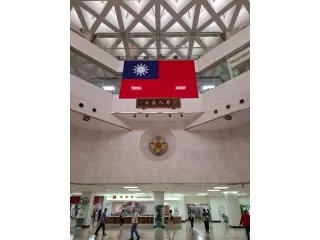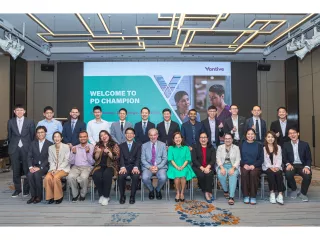PD Champion 2025 Program Review – An Australian Perspective
Written by Dr George Tsihlis, Renal Physician, Western Sydney LHD
1. Improving uptake of PD
“Our approach to PD commencement for our patients should shift from ‘What exclusions does my patient have to PD?’ to ‘How can I include my patient into PD?’” – this take-home message delivered during Prof Peter Rutherford’s keynote address regarding accessibility to PD resonated strongly with delegates and represents the emerging paradigm shift when considering KRT options for patients in modern clinical practice. Rather than considering hard exclusion criteria and one-size-fits-all membrane-centred prescriptions, perspectives regarding PD have evolved, with a focus on viewing PD as a home-based therapy which can be tailored to fit into a patient’s lifestyle - rather than become their lifestyle. Individualised PD prescriptions including incremental PD regimens, enhanced accessibility of PD enabled through initiatives such as assisted PD, the opportunities for remote patient monitoring and management, and the transition away from urea-centric adequacy assessments to more holistic assessments incorporating symptom burden, quality of life and nutrition, are just some of the ways in which PD can be viewed as an attractive KRT modality for many of our patients with kidney failure, adding to well-known benefits such as superior transplant and early survival outcomes. With a growing global prevalent population of individuals dependent on dialysis, and with limited healthcare resources – especially to provide in-centre dialysis – efforts to improve PD uptake are becoming increasingly important to deliver sustainable KRT into the future. The collaborations and best-practice sharing fostered through the PD Champion program have empowered delegates to be drivers for this positive change in the KRT landscape.
2. Strategies to keep patients on PD
The challenge of maintaining patients on PD and minimising premature transfer to haemodialysis was an experience unanimously shared by Asia Pacific region’s representatives and formed another focus of the PD Champion workshop. With engaging discussions facilitated by Prof Yeoungjee Cho, all delegates shared their approaches to improving PD longevity. PD-related peritonitis was recognised as a key catalyst for transfer to haemodialysis and accordingly, strategies that centred on optimising treatment of PD-related peritonitis (such as strict, protocolised outpatient follow-up and post-treatment reviews) or peritonitis prevention (such as patient re-education initiatives and home visits to review the dialysis environment) were commonly reported. Additional strategies which found traction amongst peers included a dedicated PD-clinic, where difficult PD cases could be managed through a multidisciplinary approach, and efforts to reduce hospitalisation such as proactive use of remote patient monitoring systems and improving after-hours healthcare accessibility through on-call PD nursing support. With many PD centres across the Asia Pacific region reporting patient:nursing ratios well above 50:1, staffing and resource limitations were recognised to be the main barrier to implementing these strategies more broadly – this forms an ongoing area for improvement in the effort to keep patients on PD.
Final thoughts
The PD Champion program has united nephrologists from across the Asia-Pacific region and has fostered the formation of a team of PD advocates. Delegates were drawn by their shared drive for advancing PD, and all walked away from this experience with an armamentarium of information and perspectives that will help them translate this passion into tangible strategies to improve the PD experience in their local practice. I am very grateful for the opportunity to attend the 2025 PD Champion program and I look forward, with optimism, to continuing to engage with this team to achieve our shared purpose.

